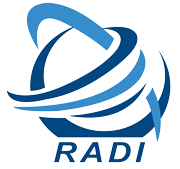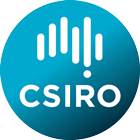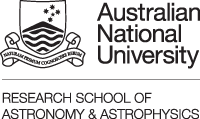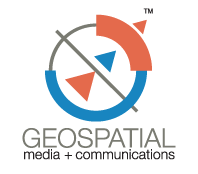FD-2: Earth Observation Data Mining: Spatio-temporal Patterns Discovery in Heterogenous Data
Mihai Datcu
Abstract:
Satellite and airborne sensors provide objective observations with broad coverage across both space and time, enabling a reliable global monitoring of the Earth environment evolution. These observations are never interpreted in isolation, they are processed and analyzed using their metadata, multitemporal or multisenor observations, other scientific data or geoinformation. The methods of Data Mining support the comprehensive use and understanding of data by sorting through a huge amount of Earth Observation and other heterogeneous data to detect patterns and processes that otherwise would remain unknown.
The past, present and near future satellite and airborne sensors have been and are continuing to collect huge amounts of Earth Observation data. With the increasing spatial resolution not only the data volume is growing, but also the image information content is exploding. This became a challenge for the data exploitation and information dissemination methods: how to enlarge the usability of the millions of EO products acquired or stored in archives to a larger user community? To overcome this, new methods of Data Mining are proposed. They are based on human-centered concepts. New features and functions are being implemented allowing to improve content extraction, search on a semantic level, the availability of collected knowledge, interactive knowledge discovery, and new visualization and data analytics methods. Data Mining is a new frame of methodologies and tools providing solutions for automating exploration and the extraction of information from EO and other heterogeneous data that can lead to knowledge discovery and the creation of actionable intelligence (exploiting). It supports novel applications involving the analysis of complex contextual spatio-temporal relationships among image structures, also adapting for user needs. Data Mining is an interdisciplinary approach for automating EO data analyses that draws on signal/image analysis, pattern recognition, artificial intelligence, machine learning, information theory, databases, semantics, ontologies, and knowledge management.
This tutorial addresses EO and Geoinformation engineers and scientists who deal with the acquisition, processing, visualization, and analysis of spatial information. They play a dynamic role in modelling, understanding and forging our living space, at scales ranging from human activities to Earth scale. The goal of this tutorial is to promote a new methodology that did not exist until now and does not grow out of the current competencies. The new methodology is based on a novel class of advanced computer engineering and information technologies, associated with overall man - machine system intelligence.
The tutorial gives the basics of the Data Mining methods, beginning with a presentation of the EO sensor models and an evaluation of their quantitative and qualitative information content. The most important categories of optical and Synthetic Aperture Radar (SAR) sensors are treated. An overview of the fields of Data Mining, Knowledge and Data Discovery, and image search engines, is intended to position Data Mining field for EO applications. The basics of EO image content extraction, as specific methods for image cues and features estimation are presented in relation with the specificity of the methodology for geostatistics and spatial statistics, i.e. geometrical and topological information representation. EO image time series and spatio-temporal information descriptors are introduced as a base for long term Earth processes understanding and full exploitation of historical EO data archives. Particularly focus will be on the presentation and discussion of the use and processing of the EO products metadata and other external information as GIS or map information. The kernel problematic is the discovery of information, thus similarity measures and grouping methods are presented and analyzed. Methods for active learning and techniques for the Visual Analytics and Data Mining, will be introduced. The presentation will include techniques for the generation of semantic catalogues for large EO archives, and methods for KDD. The introduced methods will be demonstrated using the Data Mining system recently developed at DLR. The demonstrations are of actual scenarios using TerraSAR-X, TanDEM-X, optical images, such as Landsat, or WorldView, with emphasis on mining Image Time Series.
Biography:
Mihai Datcu, received the M.S. and Ph.D. degrees in electronics and telecommunications from the University "Politechnica" of Bucharest (UPB), Bucharest, Romania, in 1978 and 1986, respectively, and the title Habilitation ´ diriger des recherches in computer science from University Louis Pasteur, Strasbourg, France, in 1999. Since 1993, he has been a Scientist with the German Aerospace Center (DLR), Oberpfaffenhofen, Germany, where he is currently a Senior Scientist and an Image Analysis Research Group Leader in the Remote Sensing Technology Institute (IMF). He is developing algorithms for analyzing very high resolution synthetic aperture radar (SAR) and interferometric SAR data. He is engaged in research related to information theoretical aspects and semantic representations in advanced communication systems. Since 2011, he has also been leading the Immersive Visual Information Mining Research Laboratory, Munich Aerospace Faculty, Munich, Germany. He has held Visiting Professor appointments with the University of Oviedo, Oviedo, Spain; University Louis Pasteur; the International Space University, Strasbourg; the University of Siegen, Germany; the University of Camerino, Italy; and the Swiss Center for Scientific Computing (CSCS), Manno. From 1992 to 2002, he had a longer Invited Professor assignment with the Swiss Federal Institute of Technology, ETH Zurich. Since 2001, he has initiated and led the Competence Centre on Information Extraction and Image Understanding for Earth Observation at Telecom ParisTech, Paris, a collaboration of DLR with the French Space Agency (CNES). He has been a Professor holder of the DLR-CNES Chair at Telecom ParisTech. Since 1981, he has been a Professor with the Faculty of Electronics, Telecommunications and Information Technology (ETTI), UPB, working on signal/image processing and electronic speckle interferometry, where has been the Director of the Research Center for Spatial Information since 2011. He and his team have developed and are currently developing the operational image information mining (IIM) processor in the payload ground segment systems for the German missions TerraSAR-X, TanDEM-X, and the ESA Sentinel 1 and 2. He is the author of more than 200 scientific publications, among them about 50 journal papers, and a book on number theory. His interests are in information and complexity theory, stochastic processes, Bayesian inference, and IIM. Dr. Datcu is a member of the European Image Information Mining Coordination Group and the Data Archiving and Distribution Technical Committee of the IEEE Geoscience and Remote Sensing Society.


 IGARSS13
IGARSS13 @IGARSS2013
@IGARSS2013













